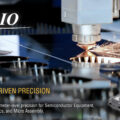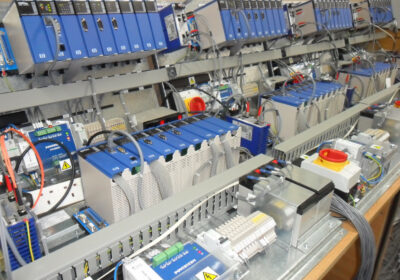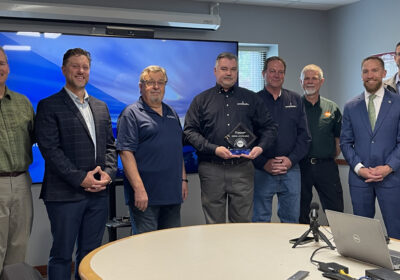As the energy sector navigates rapid changes, the IEC 61850 standard is gaining importance. This standard has evolved into a powerful enabler of smart, flexible, and future-proof energy solutions. Here, Khalid Qarooni, Technical Sales & Business Development Engineer at COPA-DATA, explores the potential impacts of IEC61850 on the energy sector.
Developed by the International Electrochemical Commision (IEC), IEC 61850 provides a set of communication protocols for intelligent electronic devices (IEDs) in digital substations. Combined with advanced automation solutions, such as COPA-DATA’s zenon software platform, this standard enables more efficient monitoring, control, and automation of energy systems. The synergy between IEC 61850 and zenon delivers interoperability, scalability, and resilience for energy infrastructure—key qualities for a sustainable and competitive future.
Key benefits of IEC 61850 and zenon in the energy sector
A major strength of IEC 61850 lies in its ability to create a communication framework that transcends proprietary systems. By establishing a universal standard, IEC 61850 allows devices from different manufacturers to work together seamlessly, removing the constraints of proprietary technologies. zenon further enhances this interoperability by providing a platform to integrate various systems and create a cohesive and flexible environment. This open, standardized approach allows energy companies to choose the best devices for their needs without vendor lock-in, facilitating an adaptable infrastructure that can evolve with industry advancements.
Another tangible advantage of adopting IEC 61850 is the potential for significant cost savings. Traditional substation configurations rely on extensive physical cabling, which is not only expensive to install but also complex to maintain. IEC 61850 replaces much of this physical wiring with secure digital communication, streamlining installation and lowering hardware costs. By implementing zenon with IEC 61850, companies can shift to a digital framework that is simpler to configure and modify, reducing upfront investment and ongoing maintenance expenses while optimizing the space and energy use of physical infrastructure.
The flexibility offered by IEC 61850 also simplifies testing and commissioning, making it easier to conduct in-depth evaluations of equipment and system performance without extensive downtime. zenon supports in-process testing, which allows for modular testing and simulation without disrupting overall operations. This flexibility means that replacing or updating components can be done with minimal impact on daily operations. This also reduces the amount of time and resources needed for testing, helping companies quickly adapt to changing demands.
Advanced analytics and data-driven decisions
By enabling comprehensive data acquisition, IEC 61850 and zenon support the use of advanced analytics, which is essential for maintaining system resilience and anticipating potential issues. With zenon’s analytics capabilities, energy companies can use real-time and historical data to monitor equipment health and system performance, helping them identify patterns, predict failures, and optimize maintenance schedules. This ability to leverage data is particularly valuable in today’s energy landscape, where proactive maintenance and efficient asset management are critical for maximizing operational longevity and minimizing costs.
IEC 61850 streamlines the flow of information across substation devices, allowing for faster data exchange and improving response times in critical situations. zenon enhances this by offering robust visualization and control options, enabling operators to make real-time decisions based on accurate, up-to-date information. This combination ensures that operators have the information they need at their fingertips, empowering them to respond swiftly to faults, adjust to fluctuating demand, and maintain grid stability with confidence.

Supporting grid development
As the world moves toward smart grid technology, IEC 61850 and zenon provide a strong foundation. Smart grids require highly adaptable and interconnected systems to handle volatile energy sources like wind and solar, which fluctuate based on environmental conditions and geographical location. The interoperability and digital communication protocols enabled by IEC 61850 ensure that distributed energy resources (DERs) and storage systems can be integrated smoothly. zenon’s flexible, scalable architecture supports this by enabling the seamless connection of various components within a smart grid, making it possible to create a resilient, flexible grid that can respond to both supply and demand variations.
The flexible architecture of IEC 61850, combined with zenon’s adaptable platform, enables energy companies to build systems that can grow with emerging technologies. Rather than investing in costly retrofits every few years, companies can adapt their existing infrastructure to meet new regulatory requirements, integrate novel energy sources, or adopt the latest technological advancements. This adaptability ensures that investments in IEC 61850 and zenon yield long-term value, equipping companies with the infrastructure needed to remain competitive and compliant with evolving industry standards.
A smarter energy future
The adoption of IEC 61850, especially when paired with zenon’s advanced capabilities, is not just a technical upgrade — it’s a strategic investment in the future of energy. By ensuring interoperability, reducing costs, enhancing testing and commissioning, and supporting smart grid technology, IEC 61850 and zenon allow energy companies to build resilient, efficient, and future-proof infrastructures. In a rapidly transforming energy industry, companies that embrace IEC 61850 and zenon will be well-positioned to optimize their operations, and achieve long-term sustainable growth.
To explore how zenon can support your power generation operations, visit the COPA-DATA website for more information or to request a demo.








